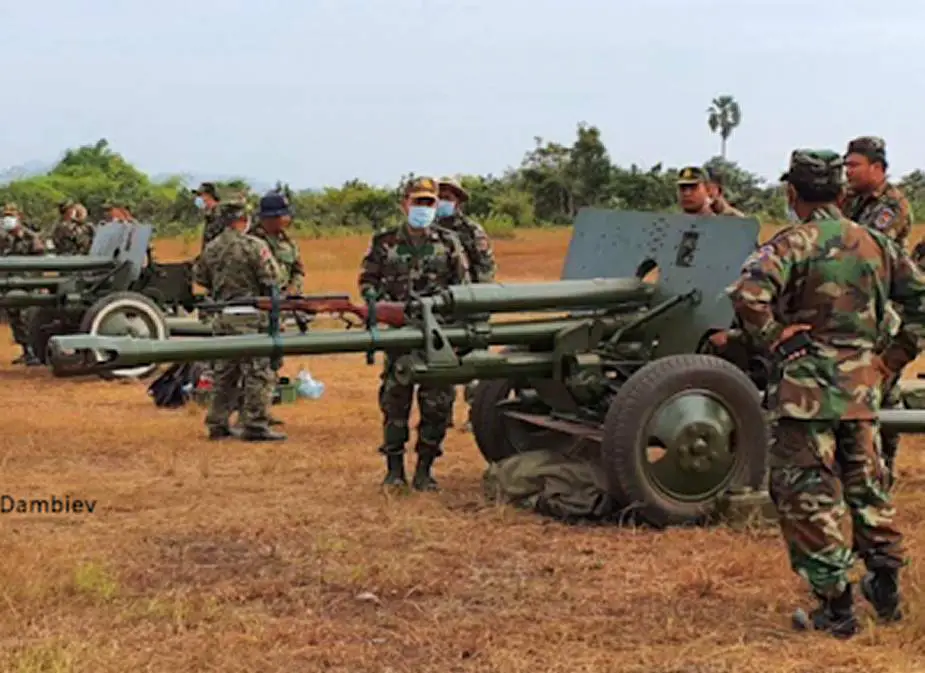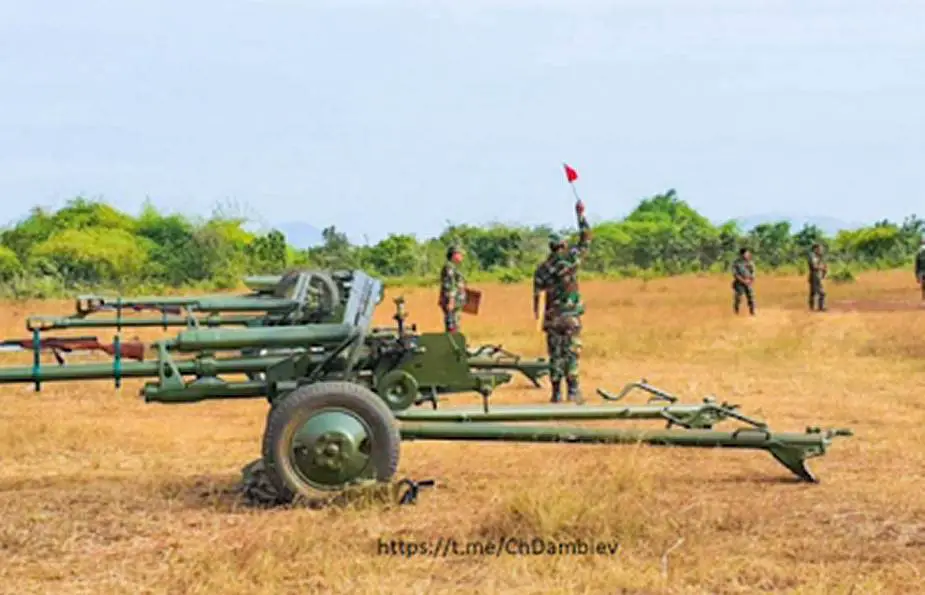Although created in the Second World War, the ZiS-3 anti-tank gun is still actively used by the Cambodian Army, Asian Defence News reports. As visible on a picture, some of these guns are used namely for training by firing a carbine attached to the barrel as a sub-caliber solution.
Follow Army Recognition on Google News at this link

Soviet-made ZiS-3 antitank gun of the Cambodian army. Notice the carbine attached to the barrel for sub-caliber training fire (Picture source: Dambiev)
In a recent exercise, the Cambodian Army (RCAF, Royal Cambodian Armed Forces) used 76mm antitank guns and other powerful artillery systems. It is worth mentioning that te 76mm ZiS-3 antitank gun was produced by the Soviet Union since World War 2. In spite of their old age and long service time with the Cambodian army since the 1970s, these guns remain in good condition, even appearing as nearly new. The Cambodian Artillery is said to currently own about 200 of these ZiS-3 guns. Although no longer able to destroy modern main battle tanks, the ZiS-3 is still capable of defeating many types of modern armor of the 21st century. A cheap training solution probably unique in the world, a carbine is attached to the barrel of some of these guns for sub-caliber direct fire.
Entered service in 1942, the ZiS-3 antitank gun was then the main antitank weapon of the Soviet Red Army during World War 2.In total between the time from its inception to the end of production after World War 2, the Soviet Union produced 103,000 of these remarkably efficient guns and many of them were later shipped by the Soviet Union to many countries around the world. Up to now, the power of this powerful 76mm gun is still sufficient to serve as support for infantry on the battlefield or attack light armored enemy targets.

Soviet-made ZiS-3 antitank guns of the Cambodian army. Notice the carbine attached to the barrel for sub-caliber training fire (Picture source: Dambiev)
















